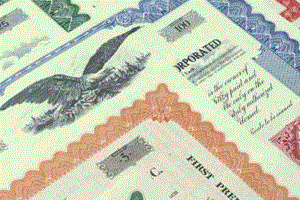Maryland Tax Free Bond Fund Analysis
| TFBIX Fund | USD 10.20 0.04 0.39% |
Maryland Tax Free Bond is overvalued with Real Value of 9.83 and Hype Value of 10.2. The main objective of Maryland Tax-free fund analysis is to determine its intrinsic value, which is an estimate of what Maryland Tax Free Bond is worth, separate from its market price. There are two main types of Maryland Mutual Fund analysis: fundamental analysis and technical analysis. Fundamental analysis focuses on the financial and economic stability of Maryland Tax Free Bond. On the other hand, technical analysis, focuses on the price and volume data of Maryland Mutual Fund to identify patterns and trends that may indicate its future price movements.
The Maryland Tax-free mutual fund is traded in the USA on NMFQS Exchange, with the market opening at 09:30:00 and closing at 16:00:00 every Mon,Tue,Wed,Thu,Fri except for officially observed holidays in the USA.
Maryland |
Maryland Mutual Fund Analysis Notes
The fund maintains most of the assets in different exotic instruments. Maryland Tax Free last dividend was 0.02 per share. Large To find out more about Maryland Tax Free Bond contact the company at 800-638-5660.Maryland Tax Free Investment Alerts
| The fund maintains most of the assets in different exotic instruments. |
Maryland Tax-free Thematic Classifications
In addition to having Maryland Tax-free mutual fund in your portfolios, you can add positions using our predefined set of ideas and optimize them against your very unique investing style. A single investing idea is a collection of funds, stocks, ETFs, or cryptocurrencies that are programmatically selected from a pull of investment themes. After you determine your favorite investment opportunity, you can then obtain an optimal portfolio that will maximize potential returns on the chosen idea or minimize its exposure to market volatility. If you are a result-oriented investor, you can benefit from optimizing one of our existing themes to build an efficient portfolio against your specific investing outlook.
 | Money Market FundsFunds investing in money market instruments or bank loans | |
 | Corporate Bonds FundsFunds investing in corporate debt instruments |
Maryland Market Capitalization
The company currently falls under '' category with a current market capitalization of 0. Market capitalization usually refers to the total value of a company's stock within the entire market. To calculate Maryland Tax-free's market, we take the total number of its shares issued and multiply it by Maryland Tax-free's current market price. To manage market risk and economic uncertainty, many investors today build portfolios that are diversified across equities with different market capitalizations. However, as a general rule, conservative investors tend to hold large-cap stocks, and those looking for more risk prefer small-cap and mid-cap equities.Technical Drivers
As of the 26th of November, Maryland Tax-free secures the Mean Deviation of 0.1541, risk adjusted performance of 0.0257, and Downside Deviation of 0.3858. In connection with fundamental indicators, the technical analysis model lets you check existing technical drivers of Maryland Tax Free, as well as the relationship between them.Maryland Tax Free Price Movement Analysis
java.lang.NullPointerException: Cannot invoke "java.lang.Number.intValue()" because the return value of "sun.invoke.util.ValueConversions.primitiveConversion(sun.invoke.util.Wrapper, Object, boolean)" is null. The output start index for this execution was zero with a total number of output elements of zero. The Bollinger Bands is very popular indicator that was developed by John Bollinger. It consist of three lines. Maryland Tax-free middle band is a simple moving average of its typical price. The upper and lower bands are (N) standard deviations above and below the middle band. The bands widen and narrow when the volatility of the price is higher or lower, respectively. The upper and lower bands can also be interpreted as price targets for Maryland Tax Free. When the price bounces off of the lower band and crosses the middle band, then the upper band becomes the price target.
Maryland Tax-free Predictive Daily Indicators
Maryland Tax-free intraday indicators are useful technical analysis tools used by many experienced traders. Just like the conventional technical analysis, daily indicators help intraday investors to analyze the price movement with the timing of Maryland Tax-free mutual fund daily movement. By combining multiple daily indicators into a single trading strategy, you can limit your risk while still earning strong returns on your managed positions.
| Daily Balance Of Power | 9.2 T | |||
| Rate Of Daily Change | 1.0 | |||
| Day Median Price | 10.2 | |||
| Day Typical Price | 10.2 | |||
| Price Action Indicator | 0.02 | |||
| Period Momentum Indicator | 0.04 |
Maryland Tax-free Forecast Models
Maryland Tax-free's time-series forecasting models are one of many Maryland Tax-free's mutual fund analysis techniques aimed at predicting future share value based on previously observed values. Time-series forecasting models ae widely used for non-stationary data. Non-stationary data are called the data whose statistical properties e.g. the mean and standard deviation are not constant over time but instead, these metrics vary over time. These non-stationary Maryland Tax-free's historical data is usually called time-series. Some empirical experimentation suggests that the statistical forecasting models outperform the models based exclusively on fundamental analysis to predict the direction of the market movement and maximize returns from investment trading.About Maryland Mutual Fund Analysis
Mutual Fund analysis is the technique used by a trader or investor to examine and evaluate how Maryland Tax-free prices is reacting to, or reflecting on a current market direction and economic conditions. It can be used to make informed decisions about market timing, and when buying or selling Maryland shares will generate the highest return on investment. We also built our fund analysis module to help investors to gain an insight into the world economy as a whole, the stock market, thematic ideas. a specific sector, or an individual Fund such as Maryland Tax-free. By using and applying Maryland Mutual Fund analysis, traders can create a robust methodology for identifying Maryland entry and exit points for their positions.
The fund invests so that, under normal market conditions, at least 80 percent of its net assets are invested in bonds that pay interest exempt from federal and Maryland state and local income taxes, and at least 80 percent of the funds income is expected to be exempt from federal and Maryland state and local income taxes. It is non-diversified.
Be your own money manager
As an investor, your ultimate goal is to build wealth. Optimizing your investment portfolio is an essential element in this goal. Using our mutual fund analysis tools, you can find out how much better you can do when adding Maryland Tax-free to your portfolios without increasing risk or reducing expected return.Did you try this?
Run AI Portfolio Architect Now
AI Portfolio ArchitectUse AI to generate optimal portfolios and find profitable investment opportunities |
| All Next | Launch Module |
Other Information on Investing in Maryland Mutual Fund
Maryland Tax-free financial ratios help investors to determine whether Maryland Mutual Fund is cheap or expensive when compared to a particular measure, such as profits or enterprise value. In other words, they help investors to determine the cost of investment in Maryland with respect to the benefits of owning Maryland Tax-free security.
| Portfolio File Import Quickly import all of your third-party portfolios from your local drive in csv format | |
| Commodity Channel Use Commodity Channel Index to analyze current equity momentum | |
| Equity Search Search for actively traded equities including funds and ETFs from over 30 global markets | |
| Options Analysis Analyze and evaluate options and option chains as a potential hedge for your portfolios |